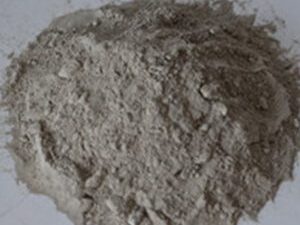Description
Cordierite Refractories: The Unsung Heroes of High-Temperature Applications
In the demanding world of high-temperature industrial processes, the choice of refractory material is critical. While more well-known materials like alumina or silicon carbide often steal the spotlight, cordierite refractories quietly play a vital and often indispensable role. Their unique blend of thermal properties, coupled with their cost-effectiveness, makes them the go-to choice for a range of applications where extreme temperature fluctuations and thermal shock are the norm.
What is Cordierite?
Cordierite is a magnesium aluminum silicate mineral with the chemical formula Mg2Al4Si5O18. In its natural form, it’s a gemstone with pleochroism (displaying different colors when viewed from different angles). However, in the realm of refractories, we’re talking about a synthetic form created through the sintering of raw materials like clay, alumina, and magnesia at high temperatures. This process results in a ceramic material with distinctive properties.
Key Properties and Advantages of Cordierite Refractories:
Cordierite refractories boast a compelling set of attributes that make them ideal for specific applications:
- Exceptional Thermal Shock Resistance: This is arguably their most significant advantage. Cordierite has a very low coefficient of thermal expansion, meaning it expands and contracts negligibly with temperature changes. This minimizes the risk of cracking or spalling even under rapid and extreme temperature cycling.
- Low Thermal Conductivity: Cordierite acts as an excellent insulator, minimizing heat loss from high-temperature processes. This leads to energy savings and improved efficiency.
- Good Chemical Resistance: Cordierite demonstrates resistance to many corrosive environments, including acids and alkalis, making it suitable for applications involving aggressive chemicals.
- Relatively High Mechanical Strength: While not as strong as some other refractories, cordierite possesses sufficient mechanical strength to withstand moderate loads and stresses at high temperatures.
- Cost-Effectiveness: Compared to more advanced refractories like silicon carbide or zirconia, cordierite offers a more economical solution, making it a viable option for a wider range of budgets.
Where are Cordierite Refractories Used?
The unique properties of cordierite refractories make them invaluable in various industries:
- Kiln Furniture: Cordierite is extensively used in the production of kiln furniture, including shelves, posts, and setters, used in the firing of ceramics, porcelain, tiles, and other materials. Their thermal shock resistance is crucial for withstanding the rapid heating and cooling cycles in kilns.
- Heat Exchangers: In applications where exhaust gases need to be efficiently cooled, cordierite is used in the construction of heat exchangers. Its low thermal conductivity and thermal shock resistance contribute to efficient and reliable heat transfer.
- Catalytic Converter Supports: The honeycomb structure of catalytic converters relies on the thermal stability of cordierite to support the catalyst material and withstand the high temperatures and rapid temperature changes encountered in automotive exhaust systems.
- Electrical Insulation: Cordierite’s high electrical resistance and thermal stability make it suitable for use in electrical insulators, particularly in high-temperature applications.
- Glass Industry: Cordierite is used in certain areas of glass furnaces and melting tanks where thermal shock resistance is paramount.
Limitations and Considerations:
While cordierite refractories offer numerous advantages, their limitations should also be considered:
- Lower Load-Bearing Capacity: They’re not suitable for applications involving heavy loads or high mechanical stresses at elevated temperatures.
- Susceptibility to Alkaline Attack: While generally resistant to acids, strong alkalis can attack cordierite over time.
- Porosity: Cordierite refractories can be more porous than other types, potentially affecting their resistance to certain gases and liquids.
Future Trends:
Ongoing research focuses on enhancing the properties of cordierite refractories by:
- Improving Mechanical Strength: Researchers are exploring methods to increase the density and strength of cordierite through advanced processing techniques.
- Enhancing Chemical Resistance: Modifying the composition of cordierite with additives is being investigated to improve its resistance to specific corrosive environments.
- Developing Nano-Enhanced Cordierite: Incorporating nanoparticles into the cordierite matrix can improve its thermal and mechanical properties.
Conclusion:
Cordierite refractories may not always be the flashiest or most celebrated materials, but their combination of thermal shock resistance, low thermal conductivity, and cost-effectiveness makes them a vital component in numerous high-temperature industrial processes. Their reliability and versatility ensure they will continue to play a crucial role in various industries for years to come, quietly and effectively handling the heat. As research continues to push the boundaries of their performance, cordierite refractories are poised to become even more indispensable in the ever-evolving landscape of high-temperature material science.

















Reviews
There are no reviews yet.